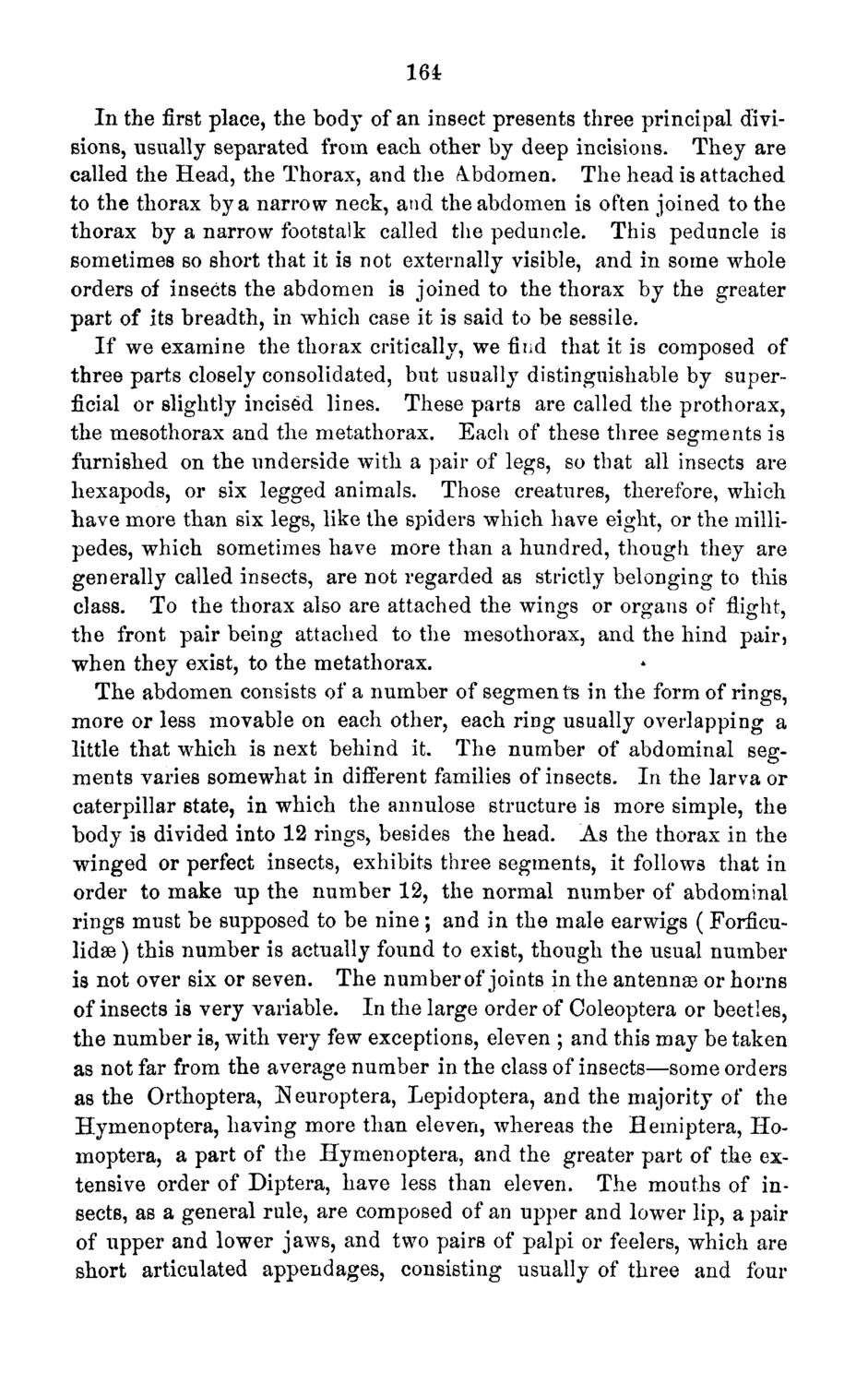| |
| |
Caption: Board of Trustees Minutes - 1871
This is a reduced-resolution page image for fast online browsing.

EXTRACTED TEXT FROM PAGE:
16± In the first place, the body of an insect presents three principal divisions, usually separated from each other by deep incisions. They are called the Head, the Thorax, and the Abdomen. The head is attached to the thorax by a narrow neck, and the abdomen is often joined to the thorax by a narrow footstalk called the peduncle. This peduncle is sometimes so short that it is not externally visible, and in some whole orders of insects the abdomen is joined to the thorax by the greater part of its breadth, in which case it is said to be sessile. If we examine the thorax critically, we find that it is composed of three parts closely consolidated, but usually distinguishable by superficial or slightly incised lines. These parts are called the prothorax, the mesothorax and the metathorax. Each of these three segments is furnished on the underside with a pair of legs, so that all insects are hexapods, or six legged animals. Those creatures, therefore, which have more than six legs, like the spiders which have eight, or the millipedes, which sometimes have more than a hundred, though they are generally called insects, are not regarded as strictly belonging to this class. To the thorax also are attached the wings or organs of flight, the front pair being attached to the mesothorax, and the hind pair, when they exist, to the metathorax. The abdomen consists of a number of segments in the form of rings, more or less movable on each other, each ring usually overlapping a little that which is next behind it. The number of abdominal segments varies somewhat in different families of insects. In the larva or caterpillar state, in which the annulose structure is more simple, the body is divided into 12 rings, besides the head. As the thorax in the winged or perfect insects, exhibits three segments, it follows that in order to make tip the number 12, the normal number of abdominal rings must be supposed to be nine; and in the male earwigs (Forficulidse) this number is actually found to exist, though the usual number is not over six or seven. The numberof joints in the antennae or horns of insects is very variable. In the large order of Ooleoptera or beetles, the number is, with very few exceptions, eleven ; and this may be taken as not far from the average number in the class of insects—some orders as the Orthoptera, Neuroptera, Lepidoptera, and the majority of the Hymenoptera, having more than eleven, whereas the Hemiptera, Homoptera, a part of the Hymenoptera, and the greater part of the extensive order of Diptera, have less than eleven. The mouths of insects, as a general rule, are composed of an upper and lower lip, a pair of upper and lower jaws, and two pairs of palpi or feelers, which are short articulated appendages, consisting usually of three and four
| |